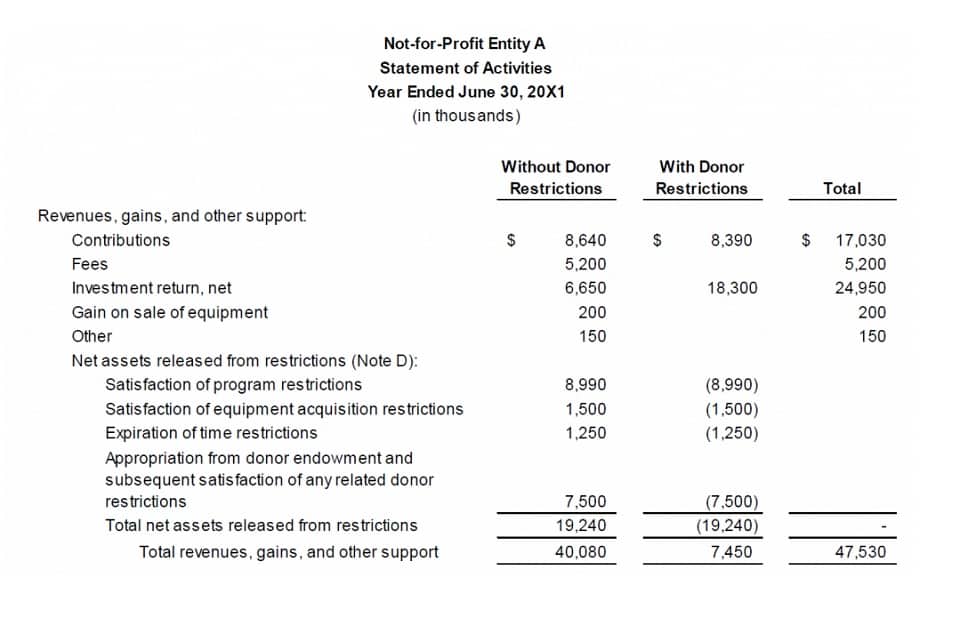
But when it comes to all the taxes deducted from your pay, four main types affect most U.S. workers. As mentioned above, you can either take the standard deduction or itemize your deductions. If you are married, you will most likely want to file as married filing jointly. However, there are some limited instances when it may make sense to file as married filing separately. A tax credit valued at $1,000, for instance, lowers your tax bill by $1,000.
After-Tax Accounts: An Important Piece of the Investment Puzzle
The income is reported to you on your W-2, which the company sends out to you electronically or by snail mail. This form also includes any applicable deductions to your taxable income, such as income tax, Social Security, Medicare, and 401(k) contributions, among others. Maximizing income through salary negotiations, acquiring additional skills, or side hustles can also increase one’s after-tax income despite the higher taxes paid on the additional income. After-tax returns break down performance data into “real-life” form for individual investors. Those investors in the highest tax bracket use municipals and high-yield stock to increase their after-tax returns.
Understanding Taxes

Some differences in child benefit estimates between the census and the CIS can be attributed to different derivation methods. In terms of total income, the census had fewer recipients than the CIS (3.8%) and the income file (7.2%) in 2020; the aggregate sum was also 1.8% higher than the CIS https://www.bookstime.com/ and 3.2% lower than the income file. These minor differences were expected because of the different target populations described above. Median and average total income amounts were also higher; the census estimates were about 4% to 6% higher than estimates from the other two sources.
Lower Immediate Tax Benefits
Other forms of taxable income can derive from loans that have been forgiven, government benefits (like disability or unemployment benefits), and winnings from casinos or lotteries. The term taxable income refers to any gross income earned that is used to calculate the amount of tax you owe. When businesses file their taxes, they do not report their revenue directly as taxable income. Rather, they subtract their business expenses from their revenue to calculate their business income. After-tax income is a critical concept in economics, personal finance, and business management, providing a realistic basis for financial decisions and planning.

We believe everyone should be able to make financial decisions with confidence. Yes, the combined limit for all contributions made to a 401(k) or similar employer-sponsored retirement plan is $59,000 for 2021 ($63,500 if age 50 or older), including after-tax contributions. For Roth IRAs, the contribution limit is $6,000 for 2021 ($7,000 if age 50 or older).
Conformity to relevant internationally recognized standards
Most taxpayers do not pay taxes on all of their income, thanks to exemptions and deductions. The IRS offers a series of income tax deductions and tax credits taxpayers can use to reduce their taxable income. While a deduction can lower your taxable income and the tax rate used to calculate your tax, a tax credit reduces your income tax obligation. Income tax is a type of tax governments impose on the income that businesses and individuals generate.
Life Insurance Proceeds
Both employees and employers pay Social Security taxes, each contributing an equal share. For the final step in calculating your taxable income, you will need to take your AGI, calculated above, and subtract all applicable deductions. Impact on your credit may vary, as credit scores are independently determined by credit bureaus based on a number of factors including the financial decisions you make with other financial services organizations. This could be a sign that you’re having too much tax withheld from your paycheck and living on less of your earnings all year. You can use Form W-4 to reduce your withholding easily now so you don’t have to wait for the government to give you your money back later. If it turns out that your tax withholding, payments, or any credits you qualify for did not cover your liability, you may need to pay the rest at tax time.
- When an in-scope record was classified as a non-response, a value was imputed.
- By making after-tax contributions to a Roth IRA, investors can enjoy greater flexibility in retirement planning as they are not subject to required minimum distributions (RMDs).
- If you have a simple tax situation and have filled out your W-4 correctly, taxes already withheld from your paychecks might cover that bill for the year.
- The separate set of guidelines is an extension of a practice that has been in place since 1966.
- It provides a clear, accurate depiction of disposable earnings or profitability, indicating the company’s financial health and growth potential or an individual’s real economic capacity.
- Five states—Alaska, Delaware, Montana, New Hampshire, and Oregon—did not have a state sales tax, although Alaska did allow municipalities to charge local sales tax.
- Use this calculator to estimate the actual paycheck amount that is brought home after taxes and deductions from salary.
- GAAP calculations do not incorporate the type of public policy deviations that are embodied in the tax code.
- The use of administrative data not only reduced response burden, but also increased the quality and quantity of income data available.
- It enables individuals and businesses to assess their actual income, plan their budgets, make informed financial decisions, and evaluate their overall financial health.
- But if it’s a pre-tax or traditional account, any money withdrawn before age 59½ is fully taxable and subject to a hefty early withdrawal penalty.
- Our work has been directly cited by organizations including Entrepreneur, Business Insider, Investopedia, Forbes, CNBC, and many others.
For businesses, the gross income or gross profit calculation is slightly different. It’s determined by subtracting the cost of goods sold (COGS) from total revenues. A higher gross income indicates a better capacity to manage and repay debts, making it a crucial factor in decisions about loan approvals, credit limits, and interest rates.
The non-response rate per question is a measure of missing information due to non-response to a question. For the short-form questionnaire, the non-response rate per question includes both TNR and partial non-response to the question. During after tax income definition the data quality assessment, a number of data quality indicators were produced and used to evaluate the quality of the data. Finally, resulting census counts were compared with other data sources and certified for final release.

Add Your Comment